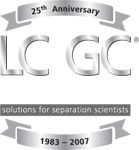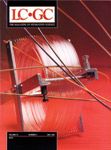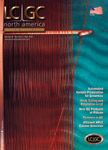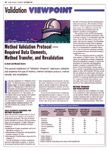My Experience in Writing Validation Viewpoint Columns for Ten Years with LCGC
Special Issues
Editor Dave Walsh suggested that current columnists for LCGC might enjoy writing about their experiences in writing their columns and relate how they got into such writings and where it has taken them.
Editor Dave Walsh suggested that current columnists for LCGC might enjoy writing about their experiences in writing their columns and relate how they got into such writings and where it has taken them. Mike Swartz and I had worked together for many years even before we started collaborating on "Validation Viewpoint" in about 1997. Mike was an MS graduate student of mine at Northeastern University in the early 1980s, as part of our forensic chemistry program. He then finished his degree and went to work with Waters Corporation, Milford, Massachusetts, at the same time pursuing a Ph.D. degree part-time from University of Rhode Island with my colleague, Phyllis Brown. Mike and I retained our mutually agreeable collaborations over these now 25-plus years, having worked together on several books, various review articles, research publications, and of course, the "Validation Viewpoint columns." We are now trying to compile many of our past columns into a "Handbook of Analytical Method Validation" for another publisher, based upon that very successful, paperback by Marcel Dekker (1997) — "Analytical Method Development and Validation" by M.E. Swartz and I.S. Krull.

Ira S. Krull
As that little primer, first suggested by Bob Pfeifer at Waters in 1997, has been so incredibly successful a seller, we just naturally continued writing separate columns for LCGC and are now putting the finishing touches (I hope) on the "Handbook of Analytical Method Validation" text that might appear in 2007.
In the beginning, we approached the then-editor for LCGC, one Jeff Schier, about starting the "Validation Viewpoint" column and Jeff was very supportive and enthusiastic. I can recall vividly having dinner with Jeff and Mike at some national analytical meeting, perhaps it was EAS or Pittcon, when we all agreed that this was a good thing to pursue. That was the start of it all, 1997, and it has continued unabated for now almost 10 years. Bob Pfeifer at Waters also suggested the title for the column, which has worked well and which we have stayed with 100%.

Because we had already written the Dekker Primer, as stated above, we already had some good ideas for initial columns, and together with invited columns, it became fairly straightforward to provide LCGC with at least 4–5 columns per year. Though we hardly are ahead of time or the deadlines for submittal, we rarely have missed the assigned month's issue, and we seem unable to run out of topics for newer columns (fortunate for us). Our goal always has been to provide interesting and practical topics that readers would find appealing and read, as well as to educate the readers about what is involved in developing, optimizing, and validating newer analytical methods. We have been perhaps fortunate in working in the Boston area, what with so many pharmaceutical, biotechnology, and instrumentation firms and colleagues, because we have drawn upon these natural resources as sources for invited columns. This has worked well for all of us, and provided different perspectives from other workers involved in areas that perhaps Mike and I would not have thought to write about. The responses from the readers have almost always been positive and supportive, and those times when someone found a problem in a specific column, we just answered their concerns and/or rectified any errors, if those existed at all.

Our workings with the editors of LCGC and the management of Advanstar Publications always have been excellent, supportive, helpful, constructive, and encouraging. They have nudged us when we were late, provided us with a working calendar for each coming year, provided us with pdf files of the galleys of new columns, let us make changes in galleys as needed, and everyone has been very happy about working together. What is wrong with this picture? We have just worked well together, very little friction, very little arguing, they have been very patient when we were a bit late, and they have just been supportive and helpful. Mike and I have never complained about anything having to do with the LCGC columns, editors, Advanstar's management, it has just all worked well for everyone.

So, as we approach our 10th year of writing these VV columns, we do not see any end or reason to end, we are happy doing them, the readers seem happy reading them, the editors and management appear happy to get new columns, and the magazine continues to be a huge success. We must all be doing something very right, so we will continue through 2007 and hopefully, the great beyond. We have never looked at the columns as chores, they have been labors of love, we have enjoyed doing them, enjoyed coming up with new topics and ideas, and we have and still do look forward to seeing new issues of the magazine with our VV columns appearing yet again. We hope to do this for another ten years, at least.

The thought occurred to us as we were writing this article that many things related to analytical method development, optimization and validation have greatly changed just within the past ten years. It is not just the analytical instrumentation, especially mass spectrometry and HPLC that have advanced, often very significantly, but especially the software related to validation. Ten years ago, there was no commercial software to help the analyst perform method validation or optimization, today of course there is, and from several vendors. Indeed, we have had a few columns that discussed validation and methods optimization software routines. Though DryLab was around 10 years ago, it has been improved greatly by LC Resources and Lloyd Snyder (and others) within the past ten years, especially for peptides and proteins, but it also has been now incorporated into more complex software from at least one vendor (Waters Corporation). That software will now permit one to acquire a few chromatograms, often suggested by the software after indicating the nature of the analytes, and then lead the analyst to an often, fully optimized set of HPLC conditions for the sample in question. And, the next set of conditions and results can then be incorporated, automatically, into choosing another set of conditions, if needed, until certain resolution criteria (critical pairs) have been realized. At that point, the software stops the instrument for performing further injections and the analyst needs to decide whether to proceed further or not. Thus, the ability of the software to choose separation conditions, analyze results of those injections, and (!) to then decide on the next set of conditions to evaluate, without any operator involvement, never existed 10 years ago. It is a significant step forward in automating all future methods development and optimization.
Similarly, there is now commercial software to assist the analyst in performing methods validation, after complete optimization, using a set of screens that prompt the analyst to determine what next validation studies might be desired or needed. The software is able to lead the analyst thru a series of FDA required and suggested validation steps that will generate the minimum amount of data and results needed to meet FDA requirements. And, that software can be updated as the FDA requirements might change in the future. Such software can now be utilized with small and large molecule pharmaceuticals, in a variety of companies or drug discovery centers.

Ira Krull's First Validation Viewpoint (Vol. 15, Number 9, 1997) with Michael Swartz
Then, there is the area of HPLC packing materials and columns, and here again there have been some very significant changes over the past decade. These might include areas such as: monolithic columns, capillary and nano-LC columns, nano-LC-ESI-MS interfacing, ultrapressure LC, and laser induced fluorescence detection in capLC areas/applications. Thus, several firms have now introduced different types of monolithic columns, of various dimensions, silica and synthetic organic based materials, which appear to offer some significant advantages of conventional, packed bed columns, especially when dealing with capillary or nano-ID columns. The successful, commercialized interfacing of nano-or capLC with ESI-MS, again from several vendors, is another area that has seen explosive growth over the past ten years, especially for protein/peptide separations and proteomics. Finally, UPLC or ultrahigh pressure LC is another separations area that has seen explosive growth, again from several firms, in the past decade. And, the nature of the separations using UPLC appear to offer serious advantages over all previous types of HPLC separations using conventional pressure, solvent delivery systems. UPLC appears to be here to stay and is being widely adopted and applied, again for both small and large molecules.
Finally, this look back would not be complete or correct if it did not mention MS, which has clearly become a very serious player in the analysis of small and, especially, large biomolecules. MS has become the key player in virtually all types of analyses, organic or inorganic, bioorganic and biochemical, for an incredible number and variety of structures. It now provides unrivaled structural information, protein sequencing (top-down and bottom-up), protein confirmation using online databases, peptide mapping data, and of course, small molecule structural data using MS-MS and MS-MS-MS or higher order fragmentation schemes (for example, ion-trap). The variety of MS instrumentation now available is orders of magnitude improved and varied over that of 10 years ago, as well as newer and novel approaches to fragmentation (ion mobility spectrometry-MS, photoionization, orbitrap MS, electron capture dissociation, electron transfer dissociation, matrix assisted laser desorption ionization, electrospray ionization, and others). The entire landscape of instrumentation has changed in just the past decade, and perhaps all of the MS instruments commercially available in 1997 are no longer on the market, with but a few notable exceptions. The application of MS today for biopolymer identification and characterization is totally different from what it was back then, together with commercial software to predict protein structures, sequences, posttranslational modifications, and so forth. It is an entirely different MS world today in the analysis of all types of biopolymers, native or synthetic or recombinant, including peptides/proteins/antibodies, nucleic acids, oligonucleotides, lipids, carbohydrates and others. What used to be the standard analytical approaches for characterizing biopolymers, such as Edman sequencing, Bradford assays, immunoassays, have given way to high resolution MS, most often in combination with high resolution separations (MDLC, 2DE, CZE/CZE, PEC/TLC, and others).
Thus, the world of analytical instrumentation and software has greatly changed just within the past decade, as indicated. There is every reason to expect that these changes are not final, just from reading the recent literature or going to the usual, scientific meetings. And, that such changes in the analytical landscape will continue apace, so that when we write this special article ten years from now, in 2017, if we are so fortunate, we will be describing similar changes and others, not yet envisioned or imagined.
Ira S. Krull "Validation Viewpoint" Co-Editor Ira S. Krull is an Associate Professor of chemistry at Northeastern University, Boston, Massachusetts, and a member of LCGC's editorial advisory board.

Polysorbate Quantification and Degradation Analysis via LC and Charged Aerosol Detection
April 9th 2025Scientists from ThermoFisher Scientific published a review article in the Journal of Chromatography A that provided an overview of HPLC analysis using charged aerosol detection can help with polysorbate quantification.
Analyzing Vitamin K1 Levels in Vegetables Eaten by Warfarin Patients Using HPLC UV–vis
April 9th 2025Research conducted by the Universitas Padjadjaran (Sumedang, Indonesia) focused on the measurement of vitamin K1 in various vegetables (specifically lettuce, cabbage, napa cabbage, and spinach) that were ingested by patients using warfarin. High performance liquid chromatography (HPLC) equipped with an ultraviolet detector set at 245 nm was used as the analytical technique.
Removing Double-Stranded RNA Impurities Using Chromatography
April 8th 2025Researchers from Agency for Science, Technology and Research in Singapore recently published a review article exploring how chromatography can be used to remove double-stranded RNA impurities during mRNA therapeutics production.



















